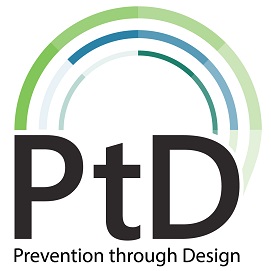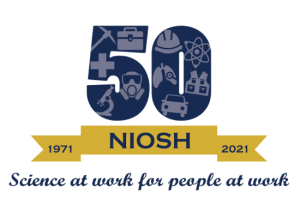Prevention Through Design
Posted on by Prevention through Design, or PtD, is the process of designing OUT a hazard and it is the most reliable and effective way to protect workers. If a hazard doesn’t exist, there is no need to purchase protective equipment and establish ongoing programs to maintain it, inspect it, and train and supervise workers to use it.
Prevention through Design, or PtD, is the process of designing OUT a hazard and it is the most reliable and effective way to protect workers. If a hazard doesn’t exist, there is no need to purchase protective equipment and establish ongoing programs to maintain it, inspect it, and train and supervise workers to use it.
Since 2007, the National Institute for Occupational Safety and Health (NIOSH) has led the Prevention through Design National Initiative whose goal is to prevent or reduce occupational injuries, illnesses, and fatalities through the inclusion of prevention considerations in all designs that impact workers. Prevention through Design methods include:
- Eliminating hazards and controlling risks to workers “at the source” or as early as possible in the life cycle of items or workplaces. One example is to design safer access for all high places where work may be required, such as movable platforms for window-washers or light fixtures that can be lowered to change bulbs.
- Including design, redesign and retrofit of new and existing work premises, structures, tools, facilities, equipment, machinery, products, substances, work processes and the organization of work. An example is to design tools and equipment to be quieter so that noise exposures do not cause permanent hearing damage. The NIOSH Buy Quiet prevention initiative is a helpful resource for such an effort.
- Enhancing the work environment through the inclusion of prevention methods in all designs that impact workers and others on the premises. For example, installing a parapet or railing on the roof during early construction, or ordering stairs with pre-cast holes for railings so that nearly all personnel can be protected from the start, whether construction workers, occupants, or maintenance workers.
Designing out hazards is not a new concept. In 1750 BC, the Babylonian king, Hammurabi, approached the risk by threatening death to designers if the building they designed collapsed on someone. Later, a biblical design mandate required a parapet wall around the edge of a roof to prevent someone falling. That remains an effective way to remove a fall hazard to this day. However, these examples were the exception rather than the rule. During World War II aircraft crashes were typically blamed on pilot error until unmanned aircraft started crashing. A method was needed to help design out hazards, and the field of System Safety was developed. Although System Safety principles remain crucial in the Aerospace, Nuclear, and Chemical industries, the focus is often on the reliability of expensive hardware rather than day to day risks for workers. In the 1990’s safety and health by design began to take hold as an effective way to protect workers. The hope is to make PtD business as usual in the 21st century.
The NIOSH PtD program works with partners in industry, labor, trade associations, professional organizations, and academia to advance PtD through:
- Research: To study the effectiveness of current PtD interventions, investigate additional solutions for existing design-related challenges, and identify future research needs.
- Education: Teach and motivate others to use PtD priorities and processes in collaborative design and redesign of facilities, work processes, equipment, and tools
- Practice: Increase use of PtD by sharing case-studies of real-life PtD solutions, encouraging stakeholders to apply them and share further.
- Policy: Encourage business, labor, government, academic, and consensus standards organizations to integrate PtD into guidance revisions.
- Small Business: Produce concise, practical PtD guides and checklists for small businesses, their insurers, and the publishers of code books used by their local municipalities.
Examples of accomplishments under the NIOSH PtD initiative include:
- Assisting in the preparation and updating of a Prevention through Design consensus standard, ASSP/ANSI Z590.3, which is now in its second revision.
- Partnering with the U.S. Green Building Council in publishing a Leadership in Energy & Environmental Design (LEED) PtD pilot credit for building certifications. The pilot credit, and PtD webinars (developed in collaboration with NIOSH), prompts the use of PtD methods to design out worker hazards for both the construction phase and operations & maintenance phase of a building’s life cycle.
- Providing education about PtD methods at dozens of events to thousands of influencers in business, safety, health, government, academia, and labor.
- Publishing educational curricula for universities and other interested users, for such topics as Architectural Design and Construction, Concrete Design, Steel Design, and Mechanical-Electrical systems design.
- Sponsoring and participating in a multi-year PtD Initiative with the Arizona State University engineering school, with free conferences and downloadable presentations.
The successful implementation of PtD involves a comprehensive approach, which includes worker health and safety in all aspects of design, redesign and retrofit and provides a vital framework for saving lives and preventing work-related injuries and illnesses.
In 2021, NIOSH, the National Safety Council, and the American Society of Safety Professionals created a new award to recognize accomplishments in the field of PtD. The inaugural PtD award was presented on July 14th, 2021. The nomination process for the 2nd annual Prevention through Design (PtD) Award will be available on the PtD website in early 2022. Now is a great time to start documenting how PtD principles have been used or advanced in your work, the work of your team, or the work of others – so that you’ll be ready to submit a nomination for the award.
In the comment section below please share examples of how you have used PtD principles to protect workers.
Jonathan A. Bach, PE, CSP, CIH, is the NIOSH Coordinator for the Prevention through Design program.

This blog is part of a series for the NIOSH 50th Anniversary. Stay up to date on how we’re celebrating NIOSH’s 50th Anniversary on our website.
Posted on by

